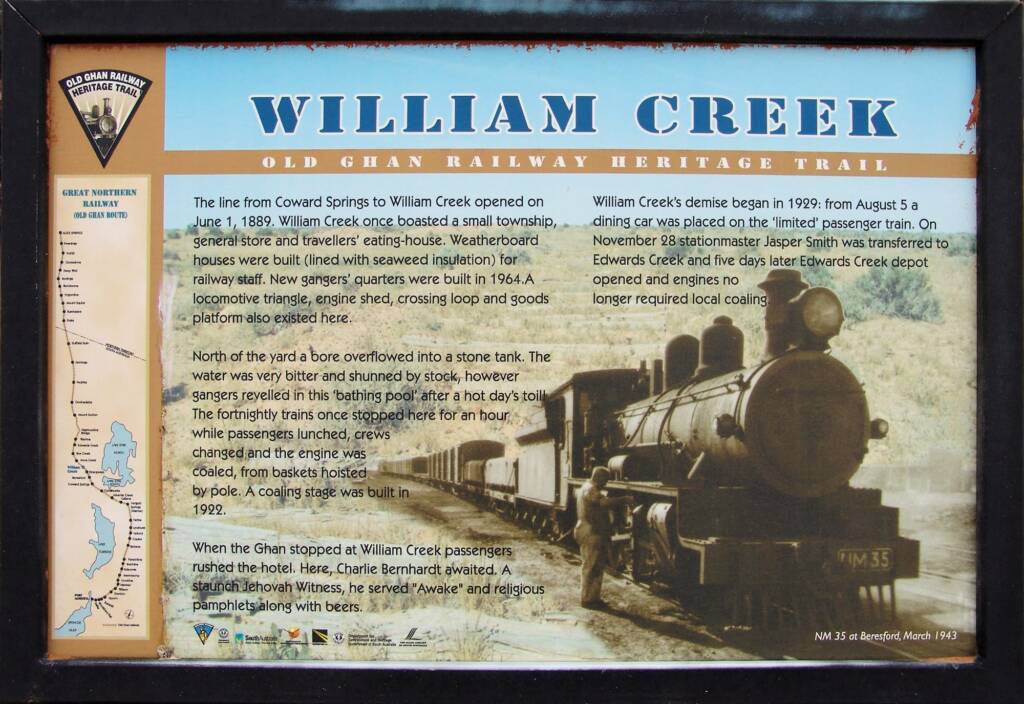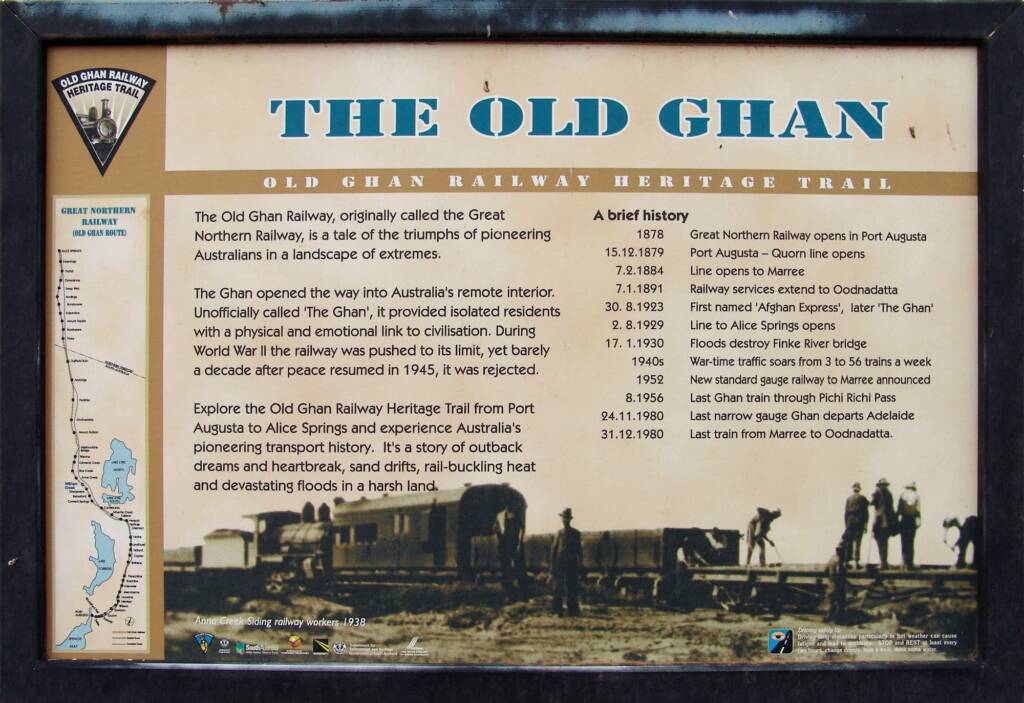William CreekHow to get there Old Ghan Railway Heritage Trail
William Creek grew with the arrival of the Old Ghan Railway. A small township developed with a general store, travellers’ eating-house, hotel and accommodation. The end of the railway line saw the township decline like many along the old railway route, with some localities nothing more than ruins. Today, there is a different set of travellers that pass through William Creek, following the dusty outback road, as they explore the Oodnadatta Track.

William Creek – Old Ghan Railway Heritage Trail
The line from Coward Springs to William Creek opened on June 1, 1889. William Creek once boasted a small township, general store and travellers’ eating-house. Weatherboard houses were built (lined with seaweed insulation) for railway staff. New gangers’ quarters were built in 1964. A locomotive triangle, engine shed, crossing loop and goods platform also existed here.
North of the yard a bore overflowed into a stone tank. The water was very bitter and shunned by stock, however gangers revelled in this ‘bathing pool’ after a hot day’s toil! The fortnightly trains once stopped here for an hour while passenger lunched, crews changed and the engine was coaled, from baskets hoisted by pole. A coaling stage was built in 1922.
When the Ghan stopped at William Creek passengers rushed the hotel. Here, Charlie Bernhardt awaited. A staunch Jehovah Witness, he served “Awake” and religious pamphlets along with beers.
William Creek’s demise began in 1929: from August 5 a dining car was placed on the ‘limited’ passenger train. ON November 28 stationmaster Jasper Smith was transferred to Edwards Creek and five days later Edwards Creek depot opened and engines no longer required local coaling.
Sourced: Old Ghan Railway Heritage Trail signage

The Old Ghan – Old Ghan Railway Heritage Trail
The Old Ghan Railway, originally called the Great Northern Railway, is a tale of the triumphs of pioneering Australians in a landscape of extremes.
The Ghan opened the way into Australia’s remote interior. Unofficially called ‘The Ghan’, it provided isolated residents with a physical and emotional link to civilisation. During World War II the railway was pushed to its limit, yet barely a decade after peace resumed in 1945, it was rejected.
Explore the Old Ghan Railway Heritage Trail from Port Augusta to Alice Springs and experience Australia’s pioneering transport history. It’s a story of outback dreams and heartbreak, sand drifts, rail-buckling heat and devastating floods in a harsh land.
A brief history
- 1878 – Great Northern Railway opens in Port Augusta
- 15.2.1879 – Port Augusta – Quorn line opens
- 7.2.1884 – Line opens to Marree
- 7.1.1891 – Railway services extend to Oodnadatta
- 30.8.1923 – First named ‘Afghan Express’, later ‘The Ghan’
- 2.8.1929 – Line to Alice Springs opens
- 17.1.1930 – Floods destroy Finke River bridge
- 1940s – War-time traffic soars from 3 to 56 trains a week
- 1952 – New standard gauge railway to Marree announced
- 8.1956 – Last Ghan train through Pichi Richi Pass
- 24.11.1980 – Last narrow gauge Ghan departs Adelaide
- 31.12.1980 – Last train from Marree to Oodnadatta
William CreekHow to get there Old Ghan Railway Heritage Trail
South AustraliaAdelaide Hills Alberrie Creek Algebuckina Bridge Belair National Park Kangaroo Island Kanku–Breakaways Conservation Park Mount Gambier Oodnadatta Oodnadatta Track Orroroo Port Augusta Port Germein Wabma Kadarbu Conservation Park William Creek Wilpena Pound Witjira National Park Woomera
